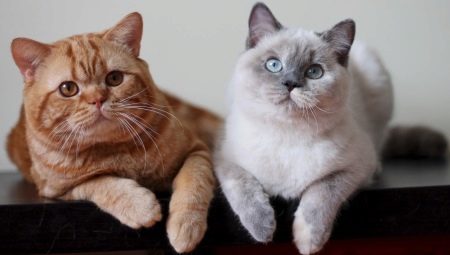Today, few people remember that the first representatives of the British breed of cats were plain and exclusively smoky blue. Over time, thanks to the long-term efforts of breeders, individuals with interesting new colors appeared.
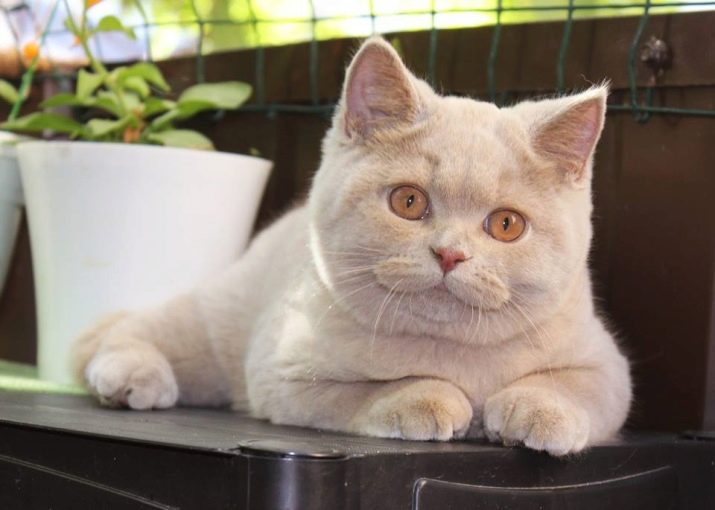
Classic colors
Today, there are about 200 different types of wool color "British". However, all this colorful diversity is clearly regulated. There is a whole system of international norms and standards, gradation of color according to a point system. Specialists in the field of felinology evaluate each kitten submitted to them for examination, and assign it a unique code, which is recorded in the pedigree of the animal.
The assessment is influenced by many different factors: general genetics, compatibility of the colors of the pair, how close the relationship of parents to each other. Some color gene may prevail over another - this also affects the resulting offspring.
When creating a pair for knitting, a whole set of different characteristics is taken into account, on which the further color depends.
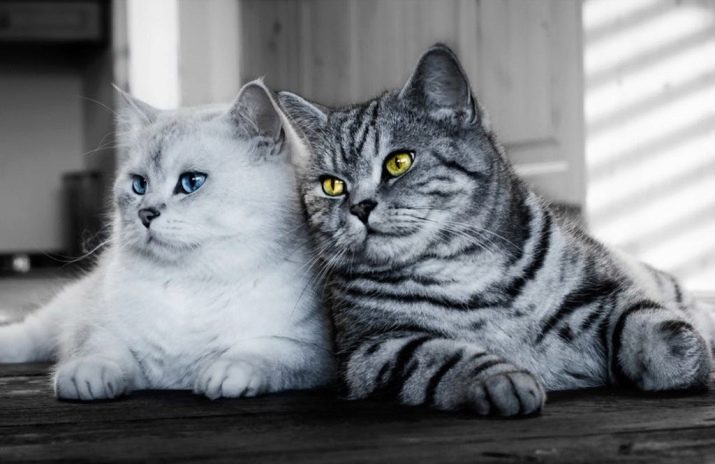
Key points to be evaluated:
- the color intensity of the coat and undercoat;
- the presence or absence of a pattern;
- the color of the eyes, pads on the paws, as well as the color of the tip of the nose of the kitten.
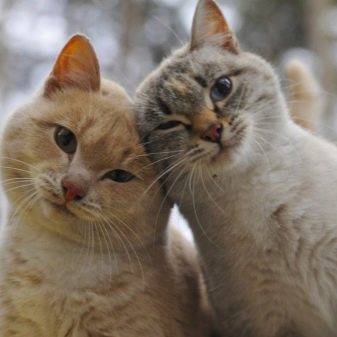
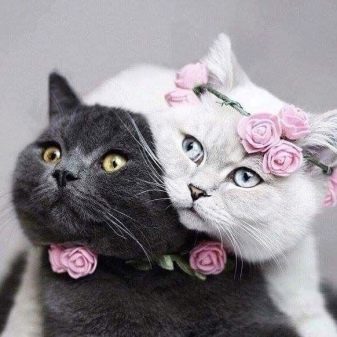
All the current color diversity of British cats can be divided into several main groups.
- Solid colors. They are also called solid or solid. The main requirement for them - the color should be uniform.
The slightest hint of motley or any pattern is not allowed.
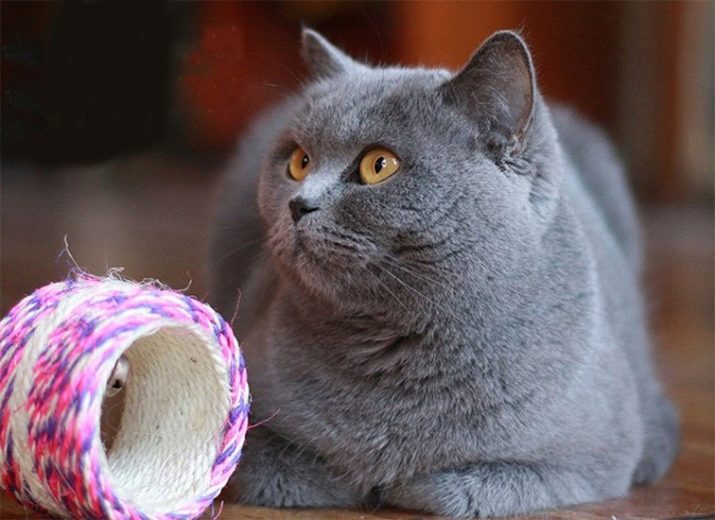
- Tortoiseshell. This color is obtained when knitting black partners with blue, cream or red.Such a color does not have any special requirements, since in this case it is impossible to predict the result in advance.

- Smoky. The main coat color of smoky Brits is observed only on the surface of the skin, and the undercoat is in contrast lighter. Color can vary from silver gray to black with wiring. A typical example of a smoky cat is chinchilla.
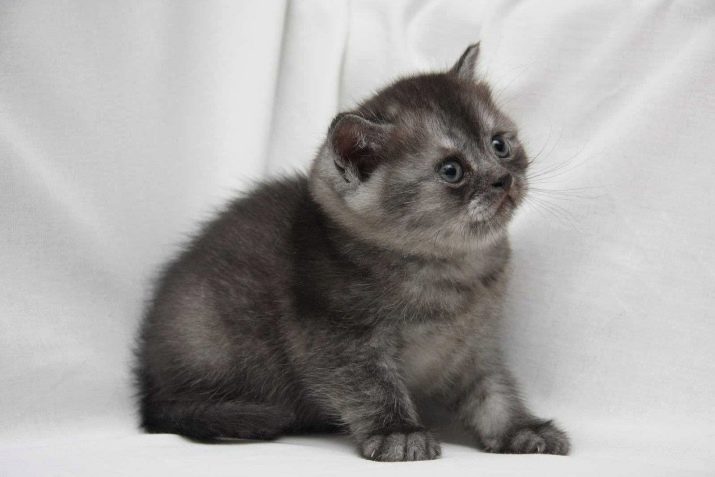
- Tabby. Different patterns are allowed here. The pattern can be implicitly expressed - ticked or marble, as well as with a traceable pattern - for example, clearly marked spots or stripes. Typical signs of tabby (tabby is written in some sources) are the mark on the forehead in the form of the letter “M”, the presence of dark stripes near the eyes and cheeks, as well as the pattern in the form of rings on the neck and chest.
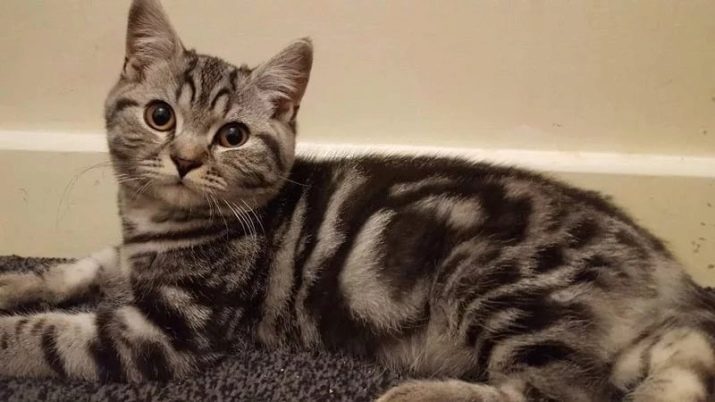
- Bicolor - This is any combination of white as an additional with other basic shades. In this case, the white part should be no more than 1/3 of the main color. Various patterns, patterns and spots are allowed. A prerequisite is the presence of color on one ear and on the head. Allowed the presence of a pattern throughout the body, subject to the proportionality of staining.
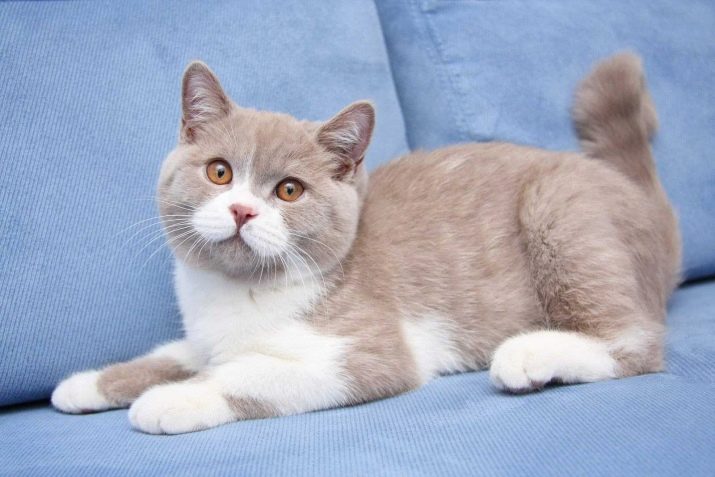
- Colorful coloring (or Siamese) - when the body itself is white, and a dark color is present only at the edges: the lower parts of the paws, the tip of the tail, muzzle and ears. The color of the coat may vary with temperature.
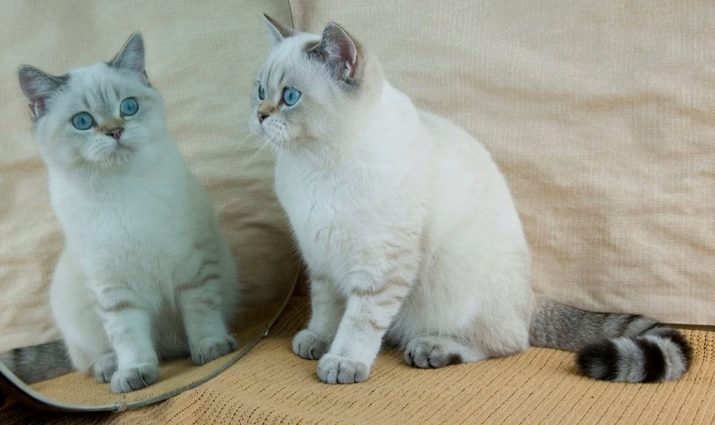
The following colors of a monophonic color are considered classic.
- The black. Cats of this color are quite rare, so they are highly valued in the market. Black wool is stiff to the touch and has a beautiful sheen. An animal should be black, without exception: from the paw pads to the tip of the nose. For the color of the eyes, some indulgences can be made: in addition to the usual green, copper and golden shades are allowed. The purity of the breed also depends on the undercoat - its color must exactly match the color of the coat.
The problem is that with age, the color depth may blur and become insufficiently expressed.

- Blue. It is otherwise interpreted as gray. This is a classic British breed. The coat is completely devoid of even a hint of shine and looks like a plush toy - it is just as soft and pleasant to the touch. Some interpretations are allowed from light smoky to graphite color. For knitting, lighter shades of wool are appreciated, but dark colors are little quoted. Color uniformity is also appreciated here, any impurities of other tones are unacceptable.
The presence of spots, stripes, and even individual hairs of a different tone is categorically unacceptable. The mirror of the nose and paw pads should be in the tone of the color of the coat, and the eyes with a warm golden-copper tint.
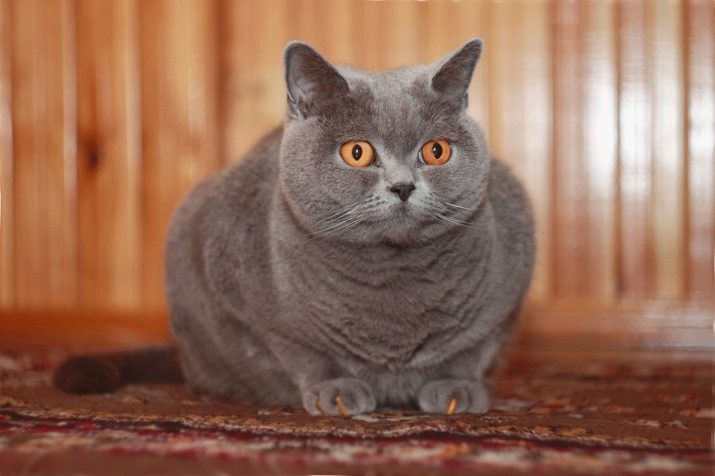
- Chocolate. This color appeared relatively recently, so there is still little chance of meeting it at exhibitions. But he already managed to become a favorite at various exhibitions. Unlike the blue group, darker shades are more appreciated here, although there are halftones from light brown, almost beige to coffee, almost black. The nose and paw pads are also dark brown; eye color from bright yellow to copper brown is allowed. The peculiarity of chocolate-colored kittens is that the color does not form immediately and finally forms at about the age of 1.5 years.
To obtain a lasting shade for the future generation, both parents have the chocolate gene - only in this case an excellent result is guaranteed.
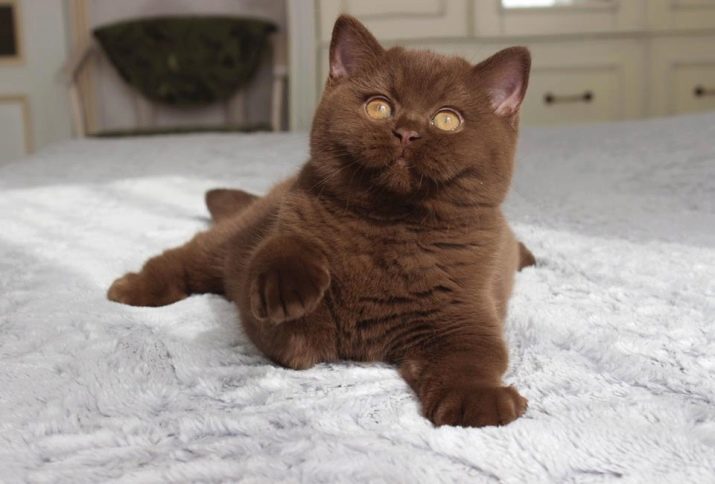
- Purple (or pink). Very beautiful and aristocratic shade, very popular. Colors of three degrees of intensity are allowed: light white-pink color, medium with a violet tint, dark type of coffee with milk. The lighter the shade of wool, the more valuable it is considered.
Approximately up to six months of age, kittens are allowed to have small impurities in their color, which should disappear at a later age.
The paws and nose should be the color of the coat, eyes traditionally copper or orange.
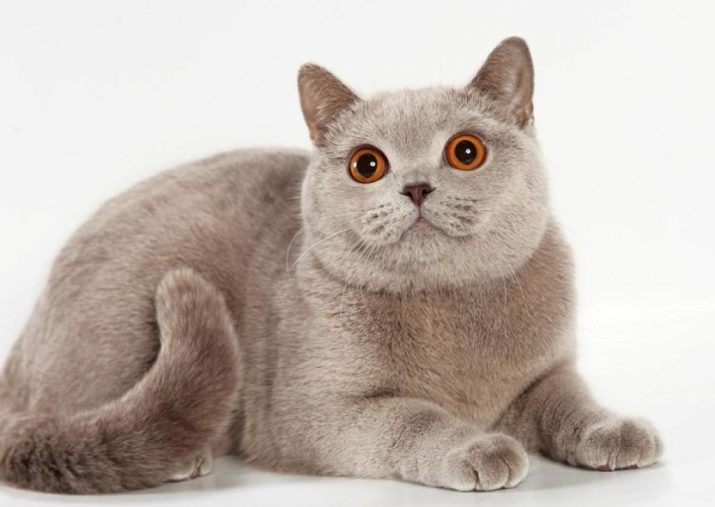
- Faun. This is a lighter version of purple. The differences are only in shades: cats with the color of fauns have a lighter, sandy shade of hair. Their paws and nose, respectively, are also lighter than those of a group of purple kittens. They are characterized by a delicate pinkish-beige color. Often it is this factor that is decisive in determining which group individuals belong to.
If both partners have a faunal shade when mating, the kittens of such a pair get a lighter color.

- Cinnamon or cinnamon color. This group is often confused with chocolate, however, they differ in color intensity. In kittens of cinnamon color, the color is more delicate, with a light, barely perceptible coating of copper or bronze. A characteristic feature of this group is that in such kittens the hair near the eyes and mouth is slightly lighter than the rest. Spout and pads are warm, powdery. This breed is also bred relatively recently, but already has an army of fans. To obtain this shade, it is necessary that both parents have this color.
The difficulty is that the presence of the cinnamon gene can not be determined immediately, but only through sophisticated testing or after several generations.
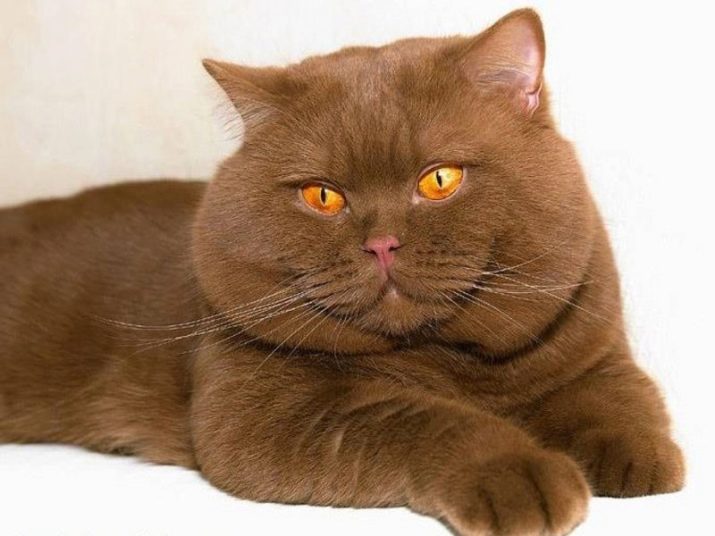
- Red, referred to in the common people as "red" or "golden". A very complex color: brightness and depth are appreciated in it, the more saturated the color, the more it is appreciated. Cats and cats that have the right red color without any impurities are a rare occurrence, so specialists allow slight splashes and a distant hint like a striped tabby pattern.
Depth and color saturation are valued above all. The tip of the nose and paw pads in red British red-brick shade, eyes copper or amber.
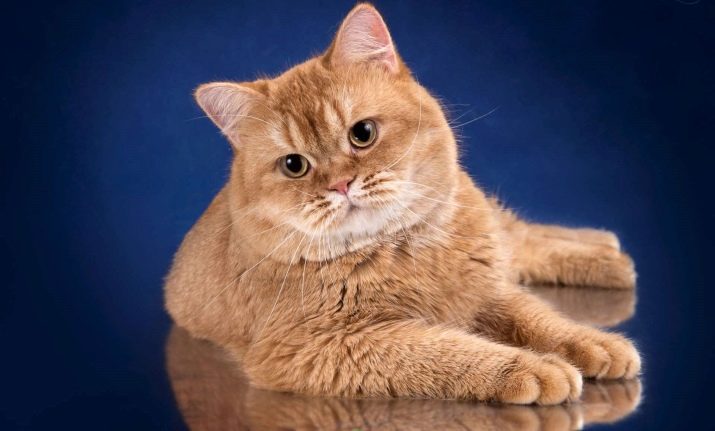
- Cream. The name "beige" is also found. This gentle peach shade breaks all records of popularity among breeders. As in other versions of the classic colors of British cats, uniformity and depth are appreciated here, without any transitions from one shade to another. The mirror of the nose and the legs are pastel pink, the eyes can be from bright orange to copper-brown.
To obtain offspring of the correct color, it is necessary that both parents have a similar gene. In the absence of at least one of the partners, the quality of the breed deteriorates.
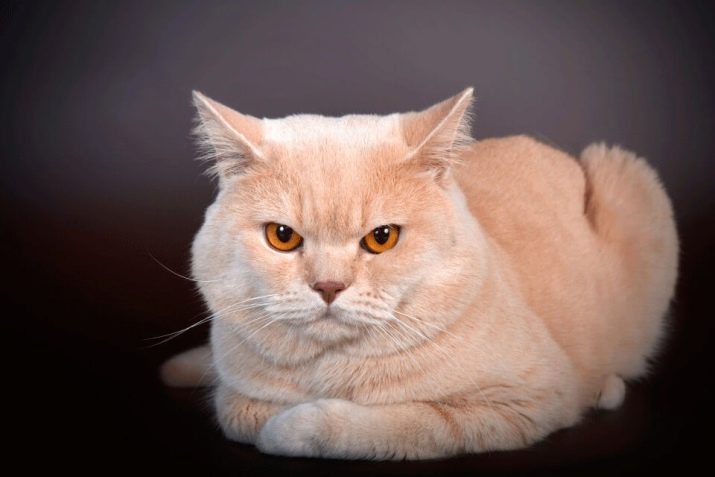
- White. As in the case of obtaining a black color, achieving perfect white is extremely difficult. The fact is that offspring from two parents with white hair often have congenital problems with the hearing aid. The color should be pure, without the slightest hint of yellowness or another shade - this is considered a defect of the breed. Often, kittens are born with colored spots that should disappear closer to the first year of life. To achieve the perfect color is quite difficult, so it is not put on stream, and such kittens are appreciated by breeders. The nose and paws of white kittens are pale pink, without a sharp pigment. Eye color can be classic yellow-green as well as blue.
Sometimes kittens with eyes of different colors are born - it is believed that they bring good luck to the house.
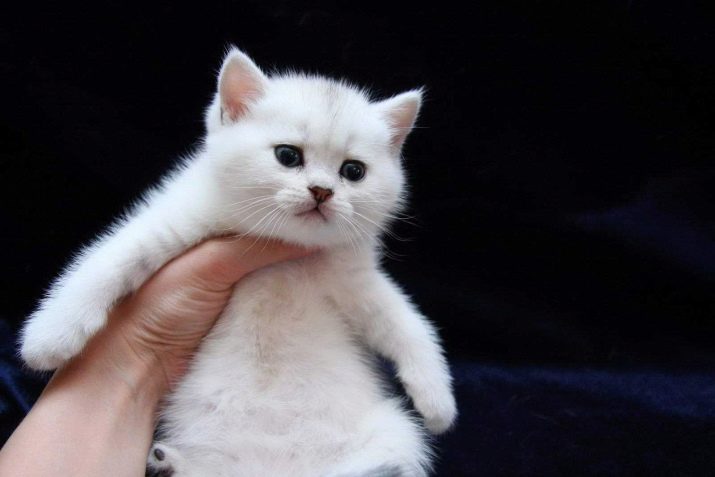
The most popular colors
Among all this diversity, the most popular are blue and purple colors. They are the easiest to bring out and the least complaints about cleanliness are presented to them. Not so long ago was bred a new look of the British with a golden color, which today are considered one of the rarest and most beautiful. Wool of gold color looks especially impressive in combination with emerald eyes - this condition is mandatory when determining quality standards. No other eye color is accepted in individuals of a golden hue. The coat is soft, with a double undercoat of the color of ripe apricot, slightly longer than that of a group of British with a solid color.
Wool of gold color looks especially impressive in combination with emerald eyes - this condition is mandatory when determining quality standards.
No other eye color is accepted in individuals of a golden hue. The coat is soft, with a double undercoat of the color of ripe apricot, slightly longer than that of a group of British with a solid color.
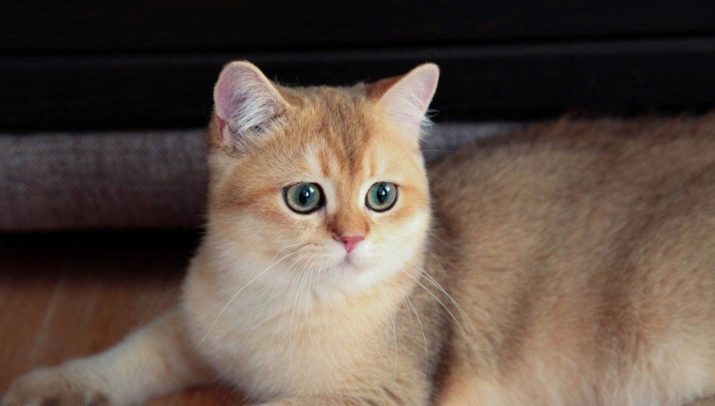
Also silver kittens are very popular. Various admixtures of gray and black shades are allowed, but the presence of yellow spots is considered a gross violation of accepted standards. However, unlike the “golden” kittens in representatives of the silver breed, the eyes can have not only green color, but also all shades of yellow and orange. During the first year of life, silver kittens can change the color intensity, as well as the pattern itself. It can become more pronounced or, on the contrary, weaken its presence.
British cats of gold and silver color are divided into several subspecies.
- Shaded (or veiled)when the pigment appears only at the ends of the hairs, and the undercoat remains white. In this case, the overall tone is even, without a picture.
- Ticked when a pattern is clearly visible. It can be spotted or striped, as well as marble or otherwise, but it is clearly marked.
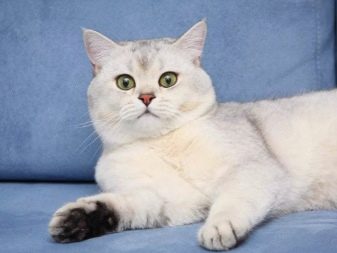
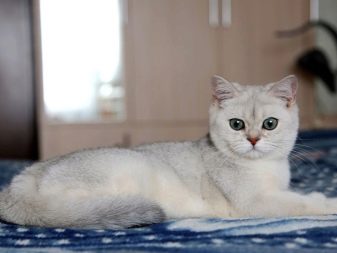
Unusual color combinations and rare species
The colors of the British are so diverse that among them there are very interesting colors. For example, two-color kittens are very popular - this color is also called bicolor - when there is a clear distinction between the white color and some other. In this case, the white color should dominate the other pigment. The most common bicolors with black and white wool. This color is often called magpie or "meglay."
Combinations of white with beige and other colors are not found very often.
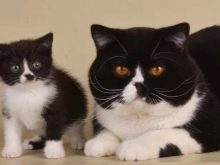
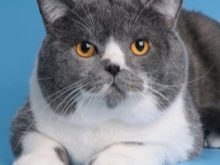

Another interesting color variation found in British cats is color point. This color is found in the breed of Siamese cats, when the whole body is light, and the muzzle, ears, feet and the tip of the tail are darker. An indispensable condition for the British with this coat color - blue eyes. Due to the lack of genetic material, the reproduction of this breed is problematic.
In addition, many indirect factors affect the hue. For example, the age of the animal - in young points, the hair is lighter than in adults.
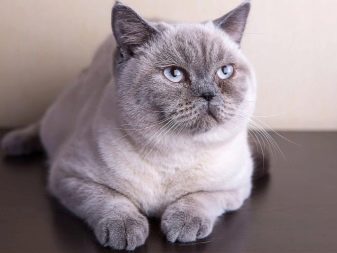
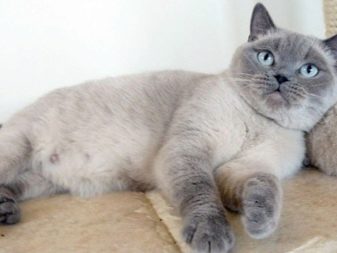
Also, the habitat of animals affects the color: at a lower air temperature, the wool begins to darken, and in a warm climate, dimming, on the contrary, brightens. Caring for them is also a rather troublesome task. To keep the long coat in good shape, it must be combed daily. In addition, animals need a special balanced diet.
Color-point color can be divided into several independent subspecies. We give a brief description of them.
- Force point characterized by the presence of dark brown spots on the forehead, nose and paw pads. The body itself is light beige.
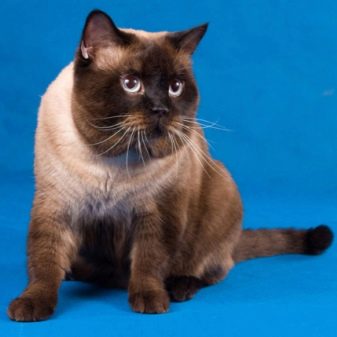

- Point chocolate - the spot on the forehead has a lighter brown shade, nose and pads of the same light brown color with a pinkish hint.
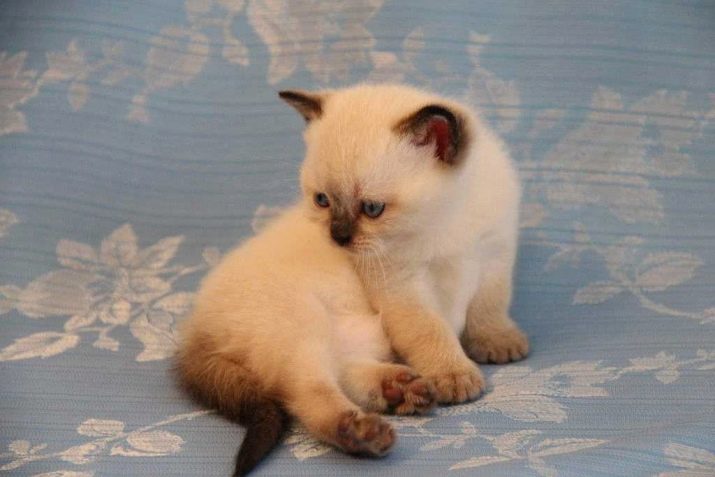
- Blue point: the main color is light gray with a bluish tint, the presence of a pronounced bluish-gray spot. The paw pads and the nose mirror are gray.
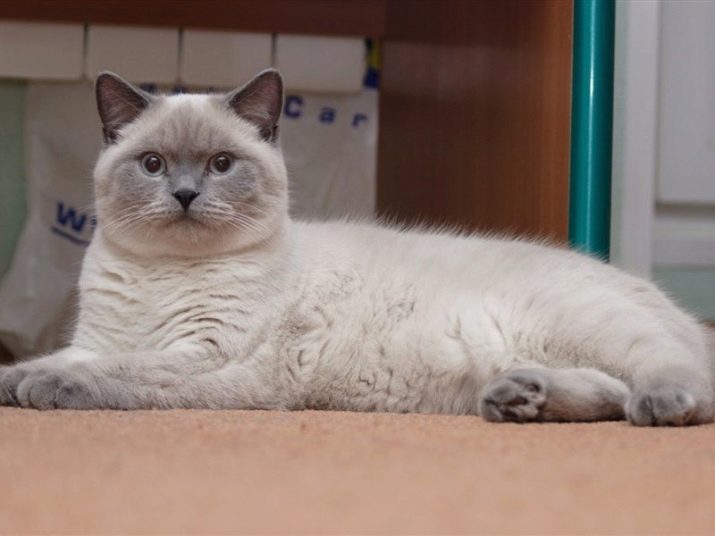
- Lilac point has some similarities with blue point, only the paws and nose are gray with a pink tint.
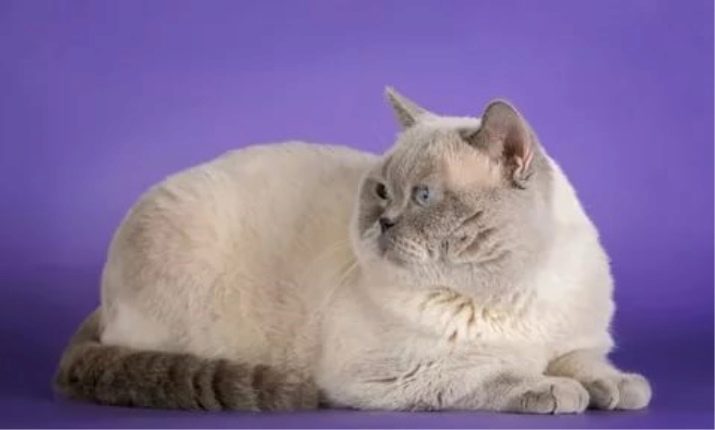
- Lynx point: dark tabby spot. A spotted or tiger pattern is allowed.

- Cream Blue Point also suggests the presence of a spot of the same color.

Very interesting color - tortie (tortie). Here the most intricate multicolor variations are possible from patchwork to the presence of small spots. This color can contain up to 80 different colors. The main condition is that all this motley look harmonious. The hair of kittens is short, compacted, soft, matte, without a glossy shine.The eyes are traditionally golden or copper in color, but as for the nose and pads on the paws, there can be several options: pink and black monogamous colors are allowed, as well as a combination of both colors.
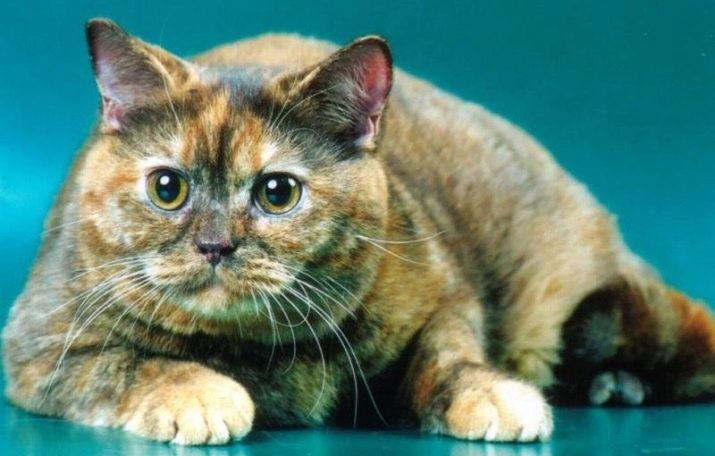
Whatever kitten of the “Briton” you choose, focus primarily on his character. After all, the main thing is that your new pet becomes a friend and a full member of your family.
Interesting facts about British cats are waiting for you in the video below.
